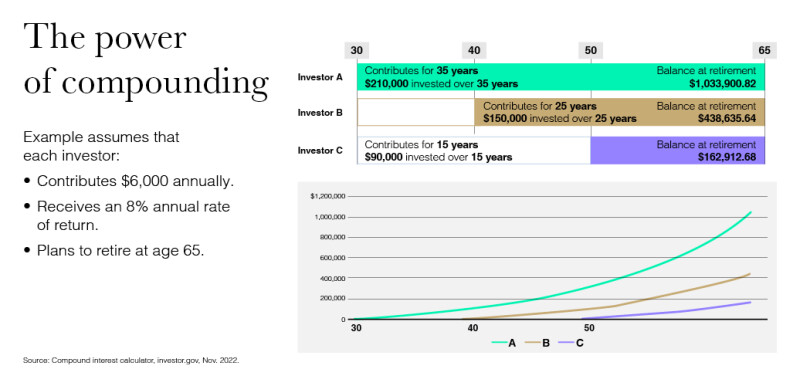Creating a source of income through
What's a good 401(k) savings goal for your age?
Depending on your remaining amount of working years, how much you want to save for retirement can vary. For example, someone in their early 20s may be on a tighter budget and have decades to make progress on their savings goals. They wouldn't need to have as much saved yet as someone who's in their 50s and may be thinking about retiring in the next decade.
Saving for retirement can feel overwhelming, so it can be helpful to set smaller
In your 30s: Have at least one year's salary saved in your 401(k) or other retirement account.In your 40s: Have three times your annual salary saved.In your 50s: Have five to six times your annual salary saved.In your 60s: Have seven to eight times your annual salary saved in that 401(k) or other retirement account(s).
Once you know what your overarching savings goals are, you can choose a percentage of your income to contribute to your 401(k) over each year to help reach those goals. Read on for more details.

How much of your paycheck should go to a 401(k)?
A general rule of thumb is to contribute 10% to 15% of your paycheck toward your retirement savings. But you don't have to put it all into a 401(k). Saving that much may not feel doable to you at this point—and that's okay. Find an amount that works for you today, then try to raise it up a percentage point each year until you hit the 15% mark or max out the contribution limit of your 401(k).
Take advantage of employer matching
If your employer offers a
If you don't contribute the maximum amount your employer is willing to match, you're essentially walking away from free money. Your overall compensation includes not just your salary, but your benefits, too. So if you don't take advantage of an employer match, you're basically underpaying yourself.
High earners may not be able to contribute as much as they want
Keep in mind that if you have a high salary, putting 10% or more of your salary into a 401(k) may not be feasible. The annual salary deferral contribution limit for 401(k) plans is $23,500 in 2025 and $24,500 in 2026. If you reach that maximum but still want to put away more money for retirement, you can contribute to another retirement savings account, such as an
50 or older? Take advantage of catch-up contributions

How compound interest can help maximize your retirement savings
The following infographic illustrates how saving early allows compound interest to make a greater impact on growth. Take a look at Investor A and Investor B. Even though Investor A only contributed $60,000 more to their retirement savings than Investor B, they experienced more than $595,000 in growth.
Compound interest example

What to do if you've maxed out your employer's 401(k) match
Once you've contributed enough to your 401(k) to maximize your employer's match, it may be a good stopping point for you on those contributions, so you can diversify your retirement savings. The closer you get to retirement age, the more you can benefit from having a
Diversify your investments with IRAs
IRAs are another way to save and diversify your investments.

Find the right partner to help you reach your retirement goals
Your retirement savings strategy isn't set in stone and is likely to change over time as your income, lifestyle and financial goals evolve. If you're not sure where you stand when it comes to saving for your golden years, you can use a
Saving enough money to support yourself and others during retirement can be challenging, but you don't have to go it alone. Consider connecting with a







